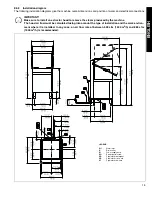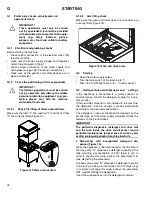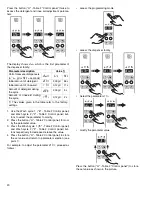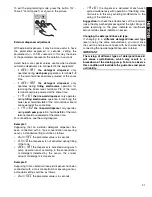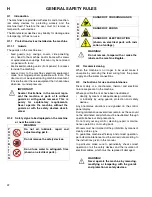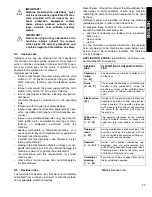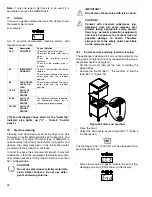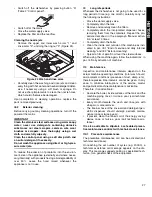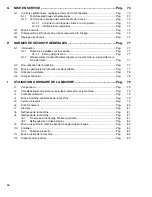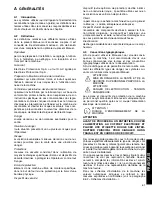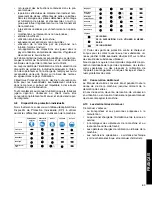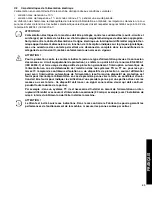
ENGLISH
25
The cycle times and the temperature may be
personalised (e.g. increase of the rinse time and
temperature). The cycle times should only be set by a
specialised technician.
I6
Operation
The filling and heating stage has finished when the
display shows the tank temperature:
The appliance is then ready for use:
•
Leave the hood.
•
Arrange dishes in the rack, avoiding washing
decorated dishes, silverware in contact with other
metals and the drying of food residuals on dishes.
IMPORTANT
Remove large food scraps from the dishes to pre-
vent clogging the filters.
•
Pre-wash the dishes by spraying them with cold or
lukewarm water, without using any detergent.
•
Insert the rack containing the dirty dishes.
•
Close the hood and select the suitable wash cycle;
the corresponding indicator light comes on and the
wash cycle starts.
Usable wash cycles:
-
Cycle I
For lightly soiled dishes: press button “E” (see Table 2
“Control panel” and table of times).
- Cycle II
(recommended)
For normally dirty dishes: press button “F” (see Table 2
“Control panel” and table of times).
•
To stop the wash cycle, just press the selected cycle
button or leave the hood.
•
To continue the wash cycle, just press the selected
cycle button or close the hood. The cycle starts again
from where it stopped.
•
At the end of the wash, the dishwasher emits a series of
beeps and “END” blinks on the display:
lift the hood and remove the rack containing the clean
dishes.
IMPORTANT
The appliance will not remove burnt food deposits
from dishes. Dishes with burnt-on food deposits
should be cleaned mechanically/chemically (for
example, pre-wash under running water) before put-
ting them in the dishwasher.
IMPORTANT
The use of “foaming”/non-specific detergents or in any
case detergents used in different ways from that pre-
scribed by the manufacturer, can cause damage to the
dishwasher and compromise washing results.
IMPORTANT
Failure to remove the residuals of detergent possibly
used for manual prewash can cause malfunctioning of
the dishwasher and compromise washing results.
Change the water in the tank at least once a day.
Type of racks and loading
•
YELLOW rack: for 18 plates with maximum diameter
of 240 mm.
Figure 19
YELLOW rack
•
GREEN rack: for 12 bowls with maximum diameter of
240 mm.
Figure 20
GREEN rack
•
BLUE rack for glasses: the glasses should be placed
upside down.
Figure 21
BLUE rack for glasses
•
YELLOW container for cutlery: insert 15 items, with
the handles pointing downwards, in each container.
Figure 22
YELLOW container for cutlery
Available as accessories: dividers for glasses and rack
for dishes with maximum diameter of 12 5/8” (320 mm).
55°C
End





